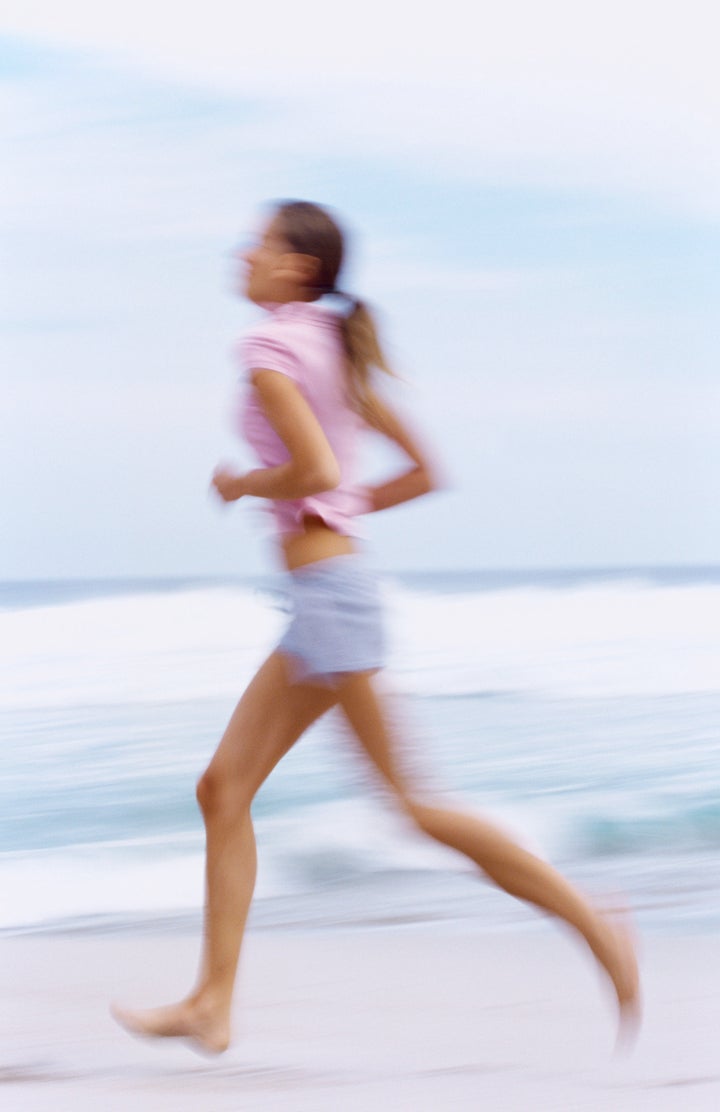
We spend most of our waking day in shoes. We put on dress shoes in the morning for work, then switch to running shoes for workouts in the gym. With so much time spent in shoes, we've come to expect not only style, but also comfort in footwear.
Nowhere is this quest for comfort, along with performance, more prevalent than in the athletic shoe industry. Since the introduction of the modern athletic shoe in the 1970s, manufacturers have spent countless time and expense on advancing its design. Terms like "cushioning systems," "torsion control," "balanced support" and "pronation correction" are typical, and the idea of a microprocessor embedded in an arch barely raises an eyebrow.
But now some wonder if perhaps the demand for more cushioning, more support, more bells and whistles -- coupled with the goal of manufacturers to create products the public wants -- has given rise to shoes that deliver too much of a good thing in their dense cushioning and thick soles.
Indeed, the shoes provide stability, comfort, support; but at the same time, they immobilize your feet and ankles. They restrict natural movement, allowing certain muscles to weaken. They increase the energy cost of exercise, as well as the risk of injury.
Analysis has also shown that the mechanics of running is actually altered when wearing shoes, with runners striking the ground with their heels instead of the more efficient forefoot strike. In fact, heel strikes cause repetitive impact forces by as much as three times the body weight with each stride. These stresses are distributed across the body and can lead to pain and injury anywhere along the body's entire kinetic chain -- the muscular system, the nervous system and the skeletal system.
Steve Maxwell, a strength specialist with MaxwellSC.com, agrees. "I think [shoe manufacturers] realize that perhaps they were headed in the wrong direction with the heavy cushioning and thick heels," he said.
Better Performance Through Natural Movement
"Barefoot or minimal footwear training provides the feet a much finer feedback from the ground, which optimizes movement efficiency," said Erwan Le Corre, founder of MovNat, a natural training movement. "It also keeps them strong and healthy."
For the last several years the fitness industry has been erring on the side of caution, with more stable shoes and high ankle taping. But this may be doing more harm than good. The rigidness and protection the tape and inflexible shoes provide actually prevents the feet and ankles from doing what they were designed to do -- move, adjust, compensate, and most important, provide feedback on how the body should respond to the surfaces the feet encounter.
This could be why the rate of ankle sprains and knee injuries for athletes in various sports has increased rather than decreased, despite the abundant options in athletic shoes. A September 2010 article by Laura Miler in "Becker's National Orthopedic and Spine Review" noted that "sports-related foot and ankle injuries are increasing among athletes," In fact, several studies have shown that those who wear high-priced, high-performance athletic shoes are actually more likely to suffer an injury.
Developing the strength of your feet and ankles will improve their overall dexterity and reactivity. Your balance, proprioception and quality of movement are also enhanced, and this benefits real-world activities, as well as training in the gym and for sports performance.
Integration Is Key
A number of footwear manufacturers are finally taking note and producing products designed for barefoot-style training. More flexible, with thin soles that have a "zero" drop from the heel to the toe, Maxwell says these "new minimalist shoes hit the mark." Their level bottoms promote a more neutral midfoot to forefoot ground strike when running, rather than the heel strike that running shoes tend to encourage.
Athletic shoes, like plaster casts for broken bones, immobilize and support. But just like what happens when wearing a cast, certain muscles will atrophy and weaken, so incorporating minimalist or barefoot training into your workout is something you should do gradually.
Start by doing your warm-ups in socks or bare feet if your gym permits it. This will give you a good introduction to the application and how it feels. Take it slowly and transition over a period of several months.
In the beginning, you will probably feel some discomfort. As you reawaken the muscles in your feet, ankles and calves, they may feel stiff and sore, and this is normal. It is not normal, though, to feel pain in your joints, bones or soft-tissue. This could indicate an injury. So if you experience aches of that sort, stop immediately and allow your body to rest and heal.
As you build to more advanced movements like pogo jumps, lunges, deadlifts, squats, stepups, squat-to-stand and Spiderman crawls, you'll notice they feel amazing performed barefoot. Training in this way promotes and develops the reactivity and stability of your feet, as well as the mobility of your ankles.
A word of caution, though: If you have diabetes or any other condition that can cause a loss of sensation in your feet, keep your shoes on. Feedback from the feet is vital in barefoot and minimalist training. Your body depends on this feedback to know how to adjust the movement you're engaging in -- or if you need to stop it immediately. Numb feet cannot provide this feedback and can be severely damaged.
For most others, though, barefoot training is safe. It offers a new and exhilarating experience and promotes healthier body movements. More than a fad, barefoot or minimalist training allows your feet and their related muscles to move in the way they were designed to move.
By: Jim Smith
Related Articles
How to Charge Your Physical Body With Energy
The Healthy Runner's Marathon Training Plan
Treadmill Vs. Running Outside
"A Closer Look At ... Barefoot Training" courtesy of LIVESTRONG.COM